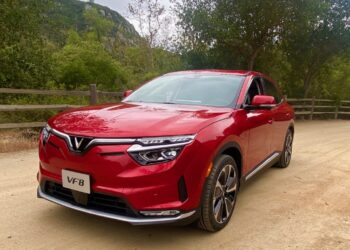A latest breakthrough got here by an innovation referred to as the bipolar nickel metal hydride battery. Toyota’s new design delivers not solely a extra highly effective battery, however a way more compact one — primarily doubling its energy density whereas utilizing the identical primary chemistry.
Toyota has deployed it within the Japan-market Prius C hybrid and also will use it within the Crown.
Toyota sees solid-state batteries coming to market within the latter half of the last decade. Whereas preliminary purposes will doubtless be in EVs, they might additionally migrate to hybrids.
Engineers see additional features by low-resistance semiconductors in hybrid inverters. They not solely work quicker however use much less electrical energy. Silicon-carbide chips are the present innovative.
Toyota is pursuing next-generation gallium-nitride semiconductors as nicely, Uchiyamada mentioned. The silvery materials is claimed to be 1,000 occasions extra conductive than silicon and likewise cheaper.
In the meantime, the engine itself will maintain evolving.
The outgoing Prius has an ultra-efficient, lean-burning 1.8-liter engine with a warmth effectivity ratio of 43 p.c. Toyota thinks it will probably obtain efficiencies as excessive as 50 p.c.
That is not too far down the highway, Uchiyamada mentioned.
As gasoline and diesel progressively fade from the scene, Toyota forecasts that artificial and biofuels will fill the void in some international markets, particularly on the fringes.
South America, as an example, is already a pacesetter in bioethanol. Diminished battery efficiency in frigid climates, in the meantime, could restrict EV penetration in colder areas — giving hybrid know-how longer legs.
The confoundedly numerous U.S. area, Maeda mentioned, stays open to many choices. From Arctic Alaska to balmy Florida, and from pickup-crazy Texas to zero-emissions California, Toyota’s most necessary market presents the largest jigsaw puzzle of wide-ranging demand.
The shift to carbon-neutral fuels is not going to solely be needed, it is going to additional prop up demand for hybrids — probably till carbon neutrality is achieved, or hopefully achieved, in 2050.
“The potential of that could be very excessive,” Maeda mentioned. “Completely different areas have completely different wants.”








